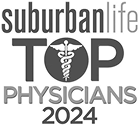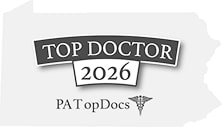PRP Therapy
Platelet-Rich Plasma (PRP) Therapy harnesses your body’s own healing power to repair and regenerate damaged tissues. Using a small sample of your blood, we concentrate the platelets—rich in growth factors and healing proteins—and inject them precisely where your body needs repair. This natural, minimally invasive treatment stimulates cell regeneration, reduces inflammation, and accelerates recovery. At Meeting Point Health, PRP Therapy is used to treat joint pain, tendon injuries, and aesthetic concerns, helping you heal from within and restore optimal function.
What is PRP Therapy?
Platelet-rich plasma therapy (PRP) is a form of regenerative medicine used as a treatment for numerous orthopedic and skin conditions. From reducing joint pain, scars, wrinkles, and inflammation, to increasing hair growth, PRP therapy may be beneficial for you.
Meeting Point Health offers a wide range of PRP therapies in Philadelphia to treat many conditions that might be limiting you. Contact us today for more information on our PRP therapies or to schedule your free consultation with our onboarding specialists.
What is Platelet-Rich Plasma (PRP)?
Platelet-rich plasma, better known as PRP, is a blood component that contains proteins and other growth factors that promote healing and cell regeneration. Platelets are important cells in the body’s natural healing process. In the body, they work to control bleeding by causing blood to clot and help form stabilizing tissue after sustaining an injury while promoting the healing cascade.
When plasma that is rich in platelets is separated from whole blood, it can be injected into the face, joints, scalp, and scars to trigger cellular regeneration, collagen formation, and reduce inflammation. PRP is also used in dermatology to treat many health and cosmetic concerns.
How PRP Works
To collect the plasma, platelets, proteins, and other growth factors found in blood, a simple sample is collected from the patient. Once the blood components are separated from the whole blood sample in our specialized centrifuges, which separates the plasma from the platelets, white and red blood cells. Then, they can then be concentrated and injected into the area of injury. At Meeting Point Health, we use Emcyte and CareStream centrifuges for obtaining the optimal platelet concentration for injection.
Injecting the site of injury with platelet-rich plasma stimulates localized collagen production, which is a large component of our skin and joints, and is essential for wound healing and tissue regeneration. This promotes the new growth of healthy cells within the surrounding area around the injection site.
PRP treatments have also been shown to relieve the pain and inflammation associated with muscle and tendon tears, arthritis, and other joint and connective tissue concerns.
PRP Treatments at Meeting Point Health
Meeting Point Health offers a range of platelet rich plasma treatments administered by Dr. Stephen Matta, DO, Regenerative Orthopedic Medicine specialist, in a sterile, comfortable setting. In addition to traditional platelet rich plasma treatment, we also provide the following ultra-concentrated plasma therapies:
- Platelet-rich fibrin matrix (PRFM)
- Platelet lysate (hyper-refined PRP)
- PRP Supershot
- Platelet-poor-plasma (PPP)
- Alpha 2 macroglobulin (A2M)
- PRP with Ozone
- PRP with Peptides
- PRP with Prolozone
- PRP with Stem Cell
- PRP with Exosomes
These injection therapies contain specific proteins and other naturally occurring blood components that are isolated from the patient’s blood sample, and can then be injected into the desired area of injury.
Each specific type of therapeutic injection can be used for more than one indication, although some specific treatment modalities work better than others. For example, while A2M and PRP are both effective in arthritis, A2M is a more powerful anti-inflammatory for acute types of joint injury, and PRP is highly effective in recruiting stem cells to promote faster healing and ligament regeneration in more degenerative conditions.
What PRP is used to treat
PRP has proven effective in treating various joint and musculoskeletal (MSK) conditions, by injecting prepared PRP directly into the affected area of injury. This stimulates a rush of collagen and elastin production to promote cell growth and regeneration and reduce inflammation, provide pain relief, and accelerate the healing process.
Knee Osteoarthritis
Osteoarthritis of the knee is considered an overuse or wear-and-tear condition, where the cartilage between the joints is worn away and the knee loses its natural cushion. With less ability to absorb shock within the knee, the joint becomes stiff, swollen, and painful, with decreased range of motion.
Degenerative Disc Disease
Similar to the cartilage in the knee, spinal disks between the vertebrae of the spine act as shock absorbers. With continuous wear and tear with age, the disks can become thin and worn out, providing less cushioning for the spine. Degenerative disc disease can lead to additional spinal issues and is often painful.
Joint Pain
Platelet-Rich Plasma (PRP) therapy is useful for joint pain because it harnesses the body’s natural healing abilities by injecting concentrated platelets into the affected area. These platelets release growth factors that promote tissue repair, reduce inflammation, and stimulate cartilage regeneration, potentially alleviating pain and improving joint function.
Plantar Fasciitis
The plantar fascia is a strong ligament found on the bottom of the foot, connecting the heel to the front of the foot and giving support to the arch of the foot. The plantar fascia is responsible for supporting the foot and absorbing the high stress placed on our feet. When this tissue is injured, typically from chronic overuse, it becomes inflamed and results in heel pain and stiffness. This is referred to as plantar fasciitis.
Wound Healing
Superficial wounds may occur from many different causes, yet all injuries require the same components to effectively heal. The concentrated platelets used in PRP injection therapy provide the components to promote optimal healing and wound repair.
Scar Treatment
Scars form when wounds penetrate the dermis layers deep inside our skin. When these layers heal, the collagen fibers may not lay flat and smooth, resulting in raised, pitted, or discolored scar tissue. In treating scars, PRP acts as a dermal filler to lift and smooth away sunken scars or help re-heal raised scar tissue. It’s most often used with micro-needling to break up the scar tissue so the PRP serum can penetrate the skin and heal deeper scar tissue.
Hair Regrowth
Hair loss often stems from weakened or damaged hair follicles, the tiny pouches from which hair grows. To combat this, PRP harnesses the healing power of your own blood to improve the symptoms of hair loss conditions such as androgenic alopecia. PRP treatment is designed to promote hair growth by nourishing the hair follicles and creating an optimal environment for hair restoration. Patients can expect to see a reduction in hair loss and a noticeable increase in the thickness and coverage of their hair over several treatment sessions.
What to expect
Before any injection appointment at Meeting Point Health, you’ll meet with Dr. Matta for an initial consultation. In that appointment, he’ll do a full physical exam and look at the areas you’re concerned about under ultrasound. He will then help you determine what combination of PRP treatments is right for you, how many treatments you’ll need, and where they should be administered. You’ll receive a copy of your treatment plan and recommendations to prepare for your appointment.
Preparing For Your Appointment
It’s recommended that you avoid medications and supplements that thin your blood for several days before your appointment, such as Warfarin or aspirin. Your medical professional will instruct you on how to prepare for your treatment and how to care for yourself afterward.
Additionally, it is important to eat before your appointment, as your treatment will require a small amount of blood to be drawn, and some patients may be sensitive to this process. We recommend a balanced meal or snack with plenty of protein, fiber, and some healthy fats. This will help prevent potential light-headedness after your blood is drawn.
What the procedure entails
After performing any necessary diagnostics or ultrasound imaging, the site of injection is prepared for treatment. Your blood is drawn and prepared under a specialized centrifuge. Dr. Matta performs all his injections under ultrasound to ensure precision and safety.
Recovery and aftercare
There is no recovery time for platelet rich plasma injections, and you can resume non strenuous activities after treatment, such as walking. PRP therapy relies on your natural immunity to repair degenerative tissue, so avoid taking NSAIDs or applying ice for 2 weeks post treatment. Note that you may experience some soreness, which is normal and reflects that it is working to restore healthy tissue in the area.








